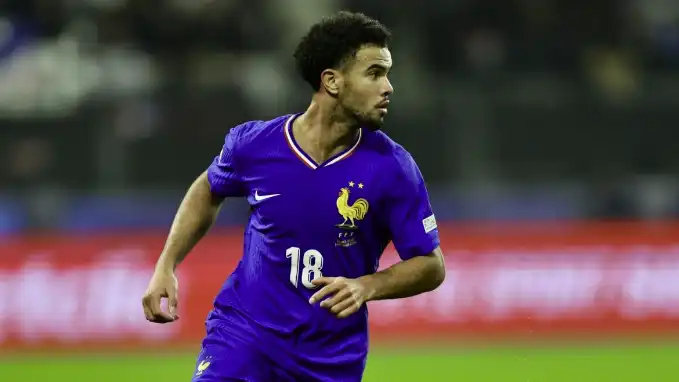I am a big fan of minimizing the amount of camera gear I need for videography The Sony a7siii will take its place in my camera kit for the next few years, but when I don't need a top-quality camera, I'm drawn to the much smaller yet very capable DJI Osmo Pocket 3
The Osmo Pocket 3 is the third update in DJI's lineup that makes capturing smooth, high-quality content easy and fun It is marketed as a pocket-sized camera with built-in stabilization that is perfect for shooting everything from fast-moving action, vlogs, and cinematic shots, without the need for a traditional bulky setup like my mirrorless camera and DJI Ronin RS3 gimbal
In the past, these small all-in-one gimbal cameras have been great for more casual video content, but have been hampered by small sensors that struggle in low-light and high-contrast scenes That said, DJI has really stepped up its game, and the Osmo Pocket 3 feels like a more professional tool that could either be a truly reliable A-Camera or more easily used with other mirrorless cameras But is it worth the money?
The Osmo Pocket 3 is a big performance upgrade, but at the cost of a larger size and a much higher starting price; see below for my reasons why you should buy or skip the Pocket 3:
DJI Osmo Pocket 3 The first reason I think you should buy it is the larger 1" CMOS sensor; compared to the 1/17" CMOS sensor in the 2020 Pocket 2, the Pocket 3 will shoot better video and photos
In addition to improved brightness and detail and less noise, the Pocket 3 has a changeable focus point, allowing the photographer to take pictures with a blurred background and deeper depth of field, as one would expect from a high-end camera Whereas the video quality of previous Osmos cameras was on par with smartphones, the Pocket 3 is now on par with a small point-and-shoot, and of course has the added benefit of a built-in gimbal with powerful subject tracking capabilities
The next reason to buy the DJI Osmo Pocket 3 is its support for higher frame rates and more professional image profiles: while the Pocket 2 is capable of up to 4k 60fps, it can now shoot crisp slow motion at 4k 120fps The Pocket 2 is now capable of capturing crisp slow-motion images at 4k 120fps
For many creators, however, D-LOG or HLG can extend dynamic range and increase flexibility in post-color editing If you don't mind the extra effort, this can help you really tweak the look
The last reason to buy the Pocket 3 is its long battery life and super fast charging speed: it has a large 1300mAh battery, which can easily last 2 to 25 hours on a single charge, depending on the shooting mode I was able to use it for an entire day when shooting a mix of short clips and 1-2 minute long clips at 4K 24fps and 4K 120fps It also supports fast charging, charging to 80% in just 16 minutes and to 100% in 32 minutes If you don't mind spending more money, an optional battery handle can extend the run time by about 60%
The first reason you might want to skip the DJI Osmo Pocket 3 is that it is currently relatively expensive Considering that the redesigned Pocket 2 Creator Combo is half the price at $259 and comes with a battery grip, wireless microphone, and many other useful accessories, you might second-guess whether the new model is worth that extra cash
To get the Pocket 3 creator combo, you'll have to shell out $669, which puts it in a very premium category and is no longer as casually priced as it once was For the more casual user, Pocket 2 will suffice
Also, the Osmo Pocket 3 is not necessarily the right choice for those looking for a camera that prioritizes portability and simplicity Don't get me wrong, the Pocket 3 remains very good at both, but it is worth noting that it is significantly larger in size and about 60 grams heavier than its predecessor With a larger sensor, a more usable rotating screen, and a larger battery, I think this is a worthwhile trade-off, but many would disagree
Related to this, the D-Log and HLG picture profiles are great, but to get the most out of them, more time is needed to color grade them to "look right" Personally, this is one of my favorite parts of editing, but for those who want their images to look as good as they do in camera, simply sticking with the standard presets will not offer much advantage in Pocket 3
Finally, if you are looking for either a point-and-shoot or a dedicated action camera, the DJI Osmo Pocket 3 or similar all-in-one camera may not be the best choice Point-and-shoots usually have the advantage of true optical zoom and higher pixels for better still images
Similarly, gimbal stabilization is great, but for intense action, an "action" camera like the Osmo Action is a better choice Aside from being more rugged and waterproof, there are far more mounting options without fear of the camera falling off, and the Osmo Action 4 features the same 10-bit D-Log M with tremendous image stabilization, although it may not be as impressive in low light
For $519, I would buy the DJI Osmo Pocket 3 Better image quality with better low light performance and increased dynamic range, support for creating more "professional" images, longer battery life, faster charging speed, not to mention a larger rotatable screen, are all worth the premium asking price compared to the previous model
That said, as great as it is, I'd recommend going with the more expensive $669 Creator Combo only if you know for sure you'll be using the included wireless mic2 and battery grip The Pocket 3 is an affordable, fun, high-performance While it's no longer as simple as I used to recommend to those looking for a video camera, the 3 now offers so much more
At a super-substantial discount, the Pocket 2 is more attractive than ever, but if you think you need a gimbal/camera combo with the best video quality you can get in this form factor, nothing beats the Pocket 3










Comments